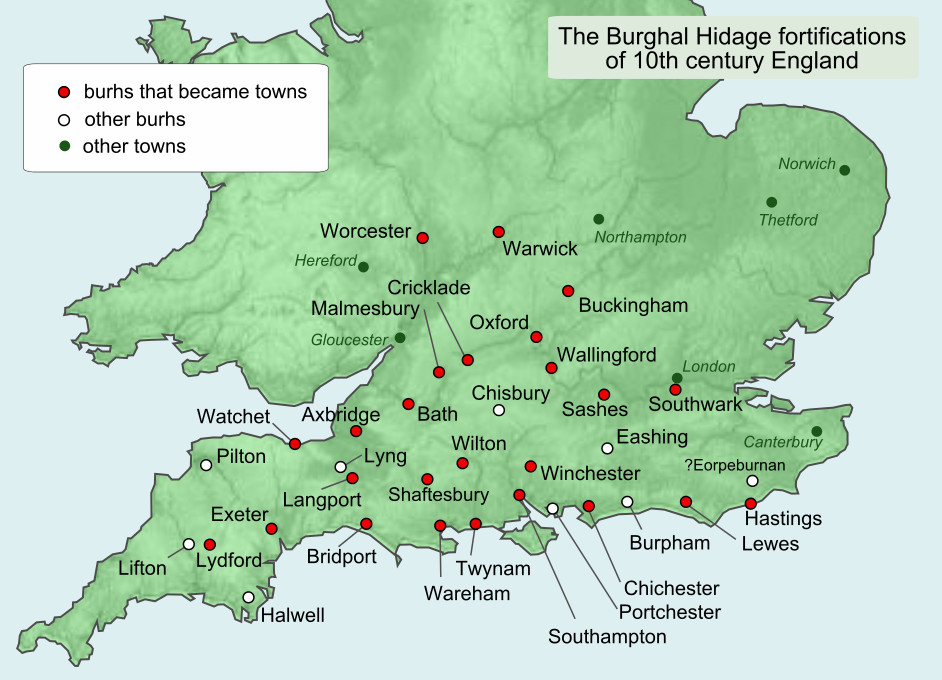

 Alfred proceeded to make the
kingdom of Wessex more secure to repel Viking raiders. He had seen the damage
down after the suprise attack on Chippenham in 878. As such Wessex required a
formalised and extensive network of defences. He looked to largely copy the
system of Charles the Bald, whereby a
series of fortified towns or ‘burhs’ were built.
Alfred proceeded to make the
kingdom of Wessex more secure to repel Viking raiders. He had seen the damage
down after the suprise attack on Chippenham in 878. As such Wessex required a
formalised and extensive network of defences. He looked to largely copy the
system of Charles the Bald, whereby a
series of fortified towns or ‘burhs’ were built.
These fortified towns were
built at strategic locations and spaced so that most of the population would be
no further than twenty miles from one of them. Troops and supplies were held in
the burhs stopping the Viking raiders from their previous tactic of
taking towns, fortifying them and then using them as a base to harry the
surrounding area.
If the Vikings tried to besiege a burh or stay in a particular
area it was likely that it would allow Alfred and his main army time to arrive
and attack. Around thirty new burhs were built around the kingdom. This also
allowed Alfred to
further centralise the defence of Wessex, rather than being so reliant on his
ealdormen.
Map of burhs across Wessex and Saxon Mercia
Hel-hama,
Anglo-Saxon burhs,
CC BY-SA 3.0
Alfred also organised his army so that half his army were out on service at any time with troops also stationed in burhs, whilst the remaining half were at home and helping with the farming. This meant that Alfred was able to keep a large army prepared to go and fight, without stifling the economy of Wessex and allowing for farming to continue.
The West Saxon’s had a navy under Aethelwulf but Alfred sought to expand it so he was in a position to challenge Viking raiders at sea. He built larger boats than those that were common at the time, and according to Anglo-Saxon Chronicle built them in a different shape to the conventional ones. These ships were largely based out of Southampton.